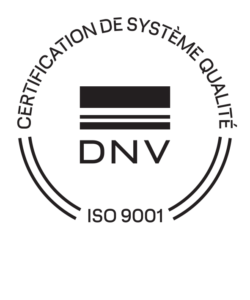PLC PROGRAMMING OF ADAPTIVE ROBOTS FOR THE NUCLEAR INDUSTRY, A NEW CASE WON BY IESA

The usefulness of PLC programming in the nuclear market
1/ What is a nuclear power plant?
Nuclear power plants are facilities designed to generate electricity from nuclear fission, a process in which atomic nuclei are split into lighter elements, releasing large amounts of energy in the form of heat.
2/ What do they do with the energy produced?
They use nuclear reactors to generate heat through a controlled nuclear fission chain reaction. The heat generated is used to heat water and produce steam. And this high-pressure steam turns a turbine, which is connected to an electrical generator, producing electricity.
3/ The importance of PLC programming in the nuclear market
PLC programming for nuclear power plant processes offers a number of important advantages in terms of control, monitoring and safety.
- PLCs are used to control and supervise the plant’s various processes, such as temperature, pressure and flow regulation.
- They are also crucial for monitoring system parameters and triggering alarms in the event of abnormal situations.
- The use of safety PLCs ensures compliance with numerous safety protocols
How PLC programming is used to drive adaptive robots
1/ What is Adaptive Robotics?
Adaptive robotics is a field of robotics that focuses on the creation of robots capable of adapting autonomously and flexibly to different environments, tasks or situations.
It often relies on machine learning algorithms, artificial intelligence systems, or specific PLC programs that enable robots to perceive their environment, analyze the information gathered and make decisions accordingly.
These adaptive robots can use a variety of sensors such as cameras, lidars (laser remote sensing), force sensors, etc., to collect data on their environment. This data is then used to adjust the robot’s actions, such as its movements, its manipulation of objects or its interaction with humans.
They offer great flexibility in the tasks they perform, and enable factories to increase productivity while ensuring safety.
2/ PLC programming: essential for controlling adaptive robots
PLC programming to drive adaptive robots offers significant advantages in terms of precise control, flexibility, integration, safety and performance optimization. This enables adaptive robots to operate efficiently and reliably in a wide variety of industrial and commercial applications, while meeting changing market and working environment requirements.
The major challenge of PLC programming for adaptive robot control in the nuclear market: a new business for IESA
1/ IESA’s presence in the nuclear market
IESA has been active in the energy market, and more specifically in the nuclear energy sector, for many years, whether on assignments in
- industrial automation,
- electricity and instrumentation,
- or industrial simulation.
We are particularly active in the latest generation of nuclear power plants, the EPR.
Our experience in a wide range of standardized fields naturally led us to the nuclear market. As a result, we master all the normative requirements specific to this sector.
2/ IESA in the special machines market
Our expertise in industrial automation, is also sought after by many players in the field of special machines, which can include industrial robots, automated production lines, test equipment, etc.
3/ Our industrial automation expertise called upon to program adaptive robots for the nuclear industry
It was against this backdrop that our customer Siléane, a specialist in adaptive robotics, turned to us. As part of a new deal in the nuclear market, we were asked to respond to a specific need:
to use our expertise in industrial automation to create programs for adaptive robots, which will carry out various actions as part of the decommissioning of a nuclear power plant.
Remerciements
We would like to express our gratitude to our new customer Siléane for their confidence in this challenging and technical project!
We’ll get back to you with more details on the scope as the project progresses, so stay tuned!

